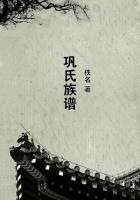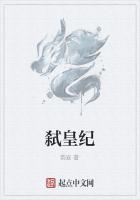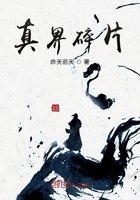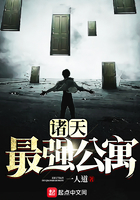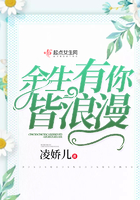A descriptive paragraph or two, treating of the seven-gabled mansion in its more recent aspect, will bring this preliminary chapter to a close. The street in which it upreared its venerable peaks has long ceased to be a fashionable quarter of the town;so that, though the old edifice was surrounded by habitations of modern date, they were mostly small, built entirely of wood, and typical of the most plodding uniformity of common life. Doubtless, however, the whole story of human existence may be latent in each of them, but with no picturesqueness, externally, that can attract the imagination or sympathy to seek it there. But as for the old structure of our story, its white-oak frame, and its boards, shingles, and crumbling plaster, and even the huge, clustered chimney in the midst, seemed to constitute only the least and meanest part of its reality. So much of mankind's varied experience had passed there,--so much had been suffered, and something, too, enjoyed,--that the very timbers were oozy, as with the moisture of a heart. It was itself like a great human heart, with a life of its own, and full of rich and sombre reminiscences.
The deep projection of the second story gave the house such a meditative look, that you could not pass it without the idea that it had secrets to keep, and an eventful history to moralize upon.
In front, just on the edge of the unpaved sidewalk, grew the Pyncheon Elm, which, in reference to such trees as one usually meets with, might well be termed gigantic. It had been planted by a great-grandson of the first Pyncheon, and, though now fourscore years of age, or perhaps nearer a hundred, was still in its strong and broad maturity, throwing its shadow from side to side of the street, overtopping the seven gables, and sweeping the whole black roof with its pendant foliage. It gave beauty to the old edifice, and seemed to make it a part of nature. The street having been widened about forty years ago, the front gable was now precisely on a line with it. On either side extended a ruinous wooden fence of open lattice-work, through which could be seen a grassy yard, and, especially in the angles of the building, an enormous fertility of burdocks, with leaves, it is hardly an exaggeration to say, two or three feet long. Behind the house there appeared to be a garden, which undoubtedly had once been extensive, but was now infringed upon by other enclosures, or shut in by habitations and outbuildings that stood on another street.
It would be an omission, trifling, indeed, but unpardonable, were we to forget the green moss that had long since gathered over the projections of the windows, and on the slopes of the roof nor must we fail to direct the reader's eye to a crop, not of weeds, but flower-shrubs, which were growing aloft in the air, not a great way from the chimney, in the nook between two of the gables. They were called Alice's Posies. The tradition was, that a certain Alice Pyncheon had flung up the seeds, in sport, and that the dust of the street and the decay of the roof gradually formed a kind of soil for them, out of which they grew, when Alice had long been in her grave. However the flowers might have come there, it was both sad and sweet to observe how Nature adopted to herself this desolate, decaying, gusty, rusty old house of the Pyncheon family; and how the even-returning summer did her best to gladden it with tender beauty, and grew melancholy in the effort.
There is one other feature, very essential to be noticed, but which, we greatly fear, may damage any picturesque and romantic impression which we have been willing to throw over our sketch of this respectable edifice. In the front gable, under the impending brow of the second story, and contiguous to the street, was a shop-door, divided horizontally in the midst, and with a window for its upper segment, such as is often seen in dwellings of a somewhat ancient date. This same shop-door had been a subject of No slight mortification to the present occupant of the august Pyncheon House, as well as to some of her predecessors. The matter is disagreeably delicate to handle; but, since the reader must needs be let into the secret, he will please to understand, that, about a century ago, the head of the Pyncheons found himself involved in serious financial difficulties. The fellow (gentleman, as he styled himself) can hardly have been other than a spurious interloper; for, instead of seeking office from the king or the royal governor, or urging his hereditary claim to Eastern lands, he bethought himself of no better avenue to wealth than by cutting a shop-door through the side of his ancestral residence. It was the custom of the time, indeed, for merchants to store their goods and transact business in their own dwellings. But there was something pitifully small in this old Pyncheon's mode of setting about his commercial operations; it was whispered, that, with his own hands, all beruffled as they were, he used to give change for a shilling, and would turn a half-penny twice over, to make sure that it was a good one. Beyond all question, he had the blood of a petty huckster in his veins, through whatever channel it may have found its way there.
Immediately on his death, the shop-door had been locked, bolted, and barred, and, down to the period of our story, had probably never once been opened. The old counter, shelves, and other fixtures of the little shop remained just as he had left them.
It used to be affirmed, that the dead shop-keeper, in a white wig, a faded velvet coat, an apron at his waist, and his ruffles carefully turned back from his wrists, might be seen through the chinks of the shutters, any night of the year, ransacking his till, or poring over the dingy pages of his day-book. From the look of unutterable woe upon his face, it appeared to be his doom to spend eternity in a vain effort to make his accounts balance.
And now--in a very humble way, as will be seen--we proceed to open our narrative.


